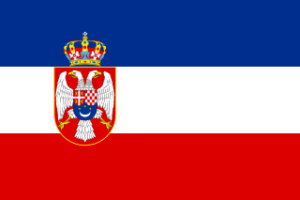 A New Fleet for a new Nation
A New Fleet for a new Nation
Born from the heel of the Austro-Hungarian Empire
Like the Polish state, the Yugoslavian Kingdom emerged within a difficult Peace process after the great war, toppling regimes and redrawing all borders throughout Europe. Since some legitimacy was needed, the new state was centered around the most prominent ancient Kingdom of the Balkans, where the spark was initiated in the summer of 1914, Serbia. And the navy of this new nation called the Kingdom of Serbs, Croats and Slovenes, asked to absorb the ships left from the Austro-Hungarian navy, still largely intact in 1918.
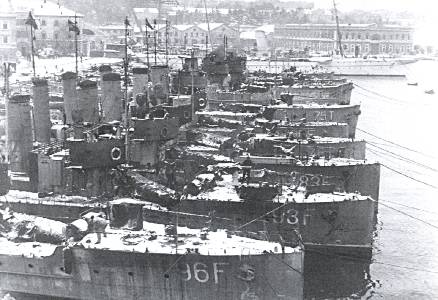
As former provinces of the old Empire, the Balkans nations seldom had a proper navy but mostly monitors and riverine crafts, even before the new Kingdom was funded in 1922. The new political entity earned in just a day an entire fleet granted to them well before the terms of the Treaty of Saint-Germain-en-Laye in 1921 changed all this. This went so fast as an Italian frogman never had an update on the situation and famously sank the Viribus Unitis at anchor, just renamed (on paper) Jugoslavija. This could have been – needless to say- a formidable addition to the new composite state. Another large coastal unit was the 6700 tons Kumbor, former SMS Kronprinz Erzherzog Rudolf (1889). She was armed with three 12-in guns. However due to her age she was acquired in 1921 but scrapped the next year.
The sinking of the Jugoslavija (ex-Viribus Unitis) by an Italian frogman at Pola, the admiral ship of the newly formed State of Slovenes, Croats and Serbs. Soon after, the entire Austro-Hungarian fleet was dismembered by a new treaty and attributed to the allies. Only a few remaining ships were allocated to the Yugoslavian government.
Reattributions to the new Yugoslav Navy
The Italians indeed had been extremely uneasy about these attributions and a seeing at their doorsteps a growing naval power, they repeatedly and adamantly asked this fleet was reallocated as war prizes instead. They eventually gained support and only a small fraction of the original fleet ended in the hands of the Yugoslavs. In all, this represented twelve modern TBs, four old minesweepers, four river monitors, and some auxiliaries. However, the government later managed to purchase some ships in the new German state at low prices, an obsolete cruiser and six modern minesweepers.
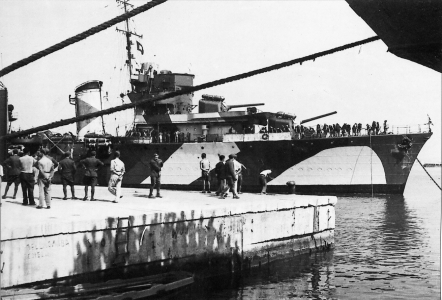 Italian Premuda 1942 (Ex-Dubrovnik)
Italian Premuda 1942 (Ex-Dubrovnik)
Impossible Naval Plans (1922-41)
In the first decade after the great war, the new Kingdom experienced economic troubles. They inherited from the already bad Austro-Hungarian situation, with debts on the international market and a fledgling industry, but above all, a constant unrest due to recent populations moves and contested internal and external borders. These three nations of the new Kingdom did not assimilate particularly well due to old cultural differences. Although there was some progress in industrial development until 1929, the world crisis plunged the country in a situation almost pre-1922. Local yards were unable to produce anything valuable for the fleet, and it would wait until the late 1930s to see some improvements take place:
- Construction of two of the Beograd class DDs in Jadranske (Split) under French supervision in 1937-39.
- Construction of a gunboat at Adriatico Yd, Trieste (Beli Orao) in 1939
- Construction of six mining tenders at Kraljevica (Yarrow) in 1931
Articles to come (and done)
Cruiser Dalmacija
Dubrovnik class DDs
Beograd class DDs
Hrabi class subs
Gunboat Beli Ora
The end of the recession was marked by political unrest. King Alexander was assassinated in Marseilles in 1934 while the new government allowed German capital to penetrate the Yugoslavian market. The new political line shifted from France, UK and Czechoslovakia to Germany and Italy. On the naval side, this was accompanied by an order for a dozen Lürssen class MTBs (8 delivered) and two Type II class U-Boats (never delivered) whereas negotiations took place for two new destroyers to be built also in Germany. Before that, one destroyer was ordered at Yarrow in 1930, one in France in 1935 (two more built locally), and two submarines in France as two in the UK. Some of these ships were international “collage”, like the Beograd class, combining a French design, Czech armament, British powerplant and Dutch firing controls !
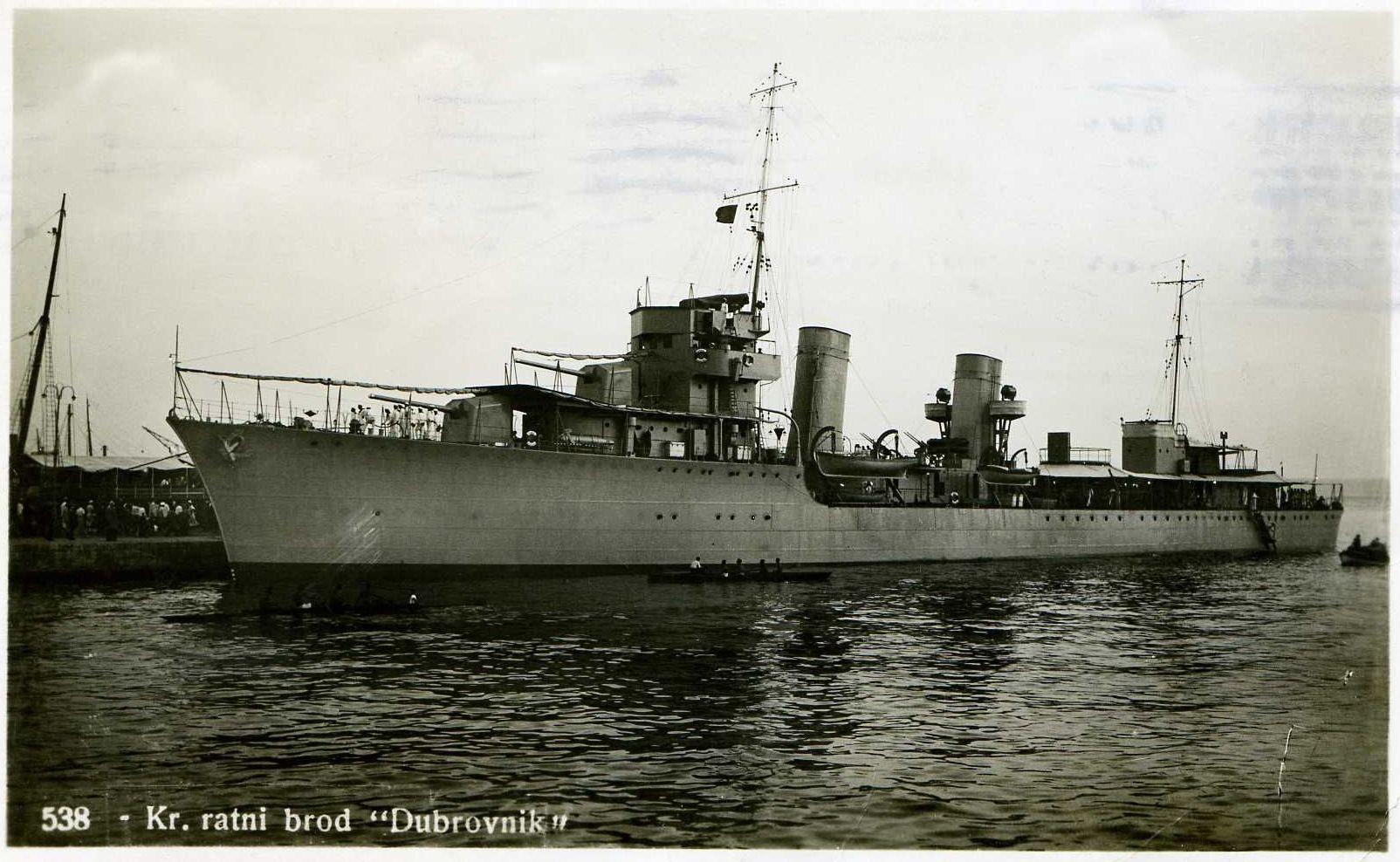 Modelled of the 1918 British flotilla leaders, this ship was to be the first of four, leading each a flotilla of six destroyers. 1929 crisis and Budget cuts ended with an half-flotilla of three destroyers led by the Dubrovnik, hardly blue water navy stuff.
Modelled of the 1918 British flotilla leaders, this ship was to be the first of four, leading each a flotilla of six destroyers. 1929 crisis and Budget cuts ended with an half-flotilla of three destroyers led by the Dubrovnik, hardly blue water navy stuff.
The Yugoslavian Navy in 1941
In size and strength, the Yugoslavian navy recalls the Polish Navy, but with an edge on pure tonnage. However where Polish ships are mostly recent, Yugoslav ones are not. The cruiser Dalmacija (Niobe) is a pre-WW1 relic, and the torpedo boats and minesweepers are all from the last war. There are similarities in destroyer though since the Dubrovnik is certainly on par with the Polish Grom. The British-built ship was the best and most heavily armed destroyer at launch. It could act as a destroyer leader and became a prize of choice for Italy after the country was occupied.
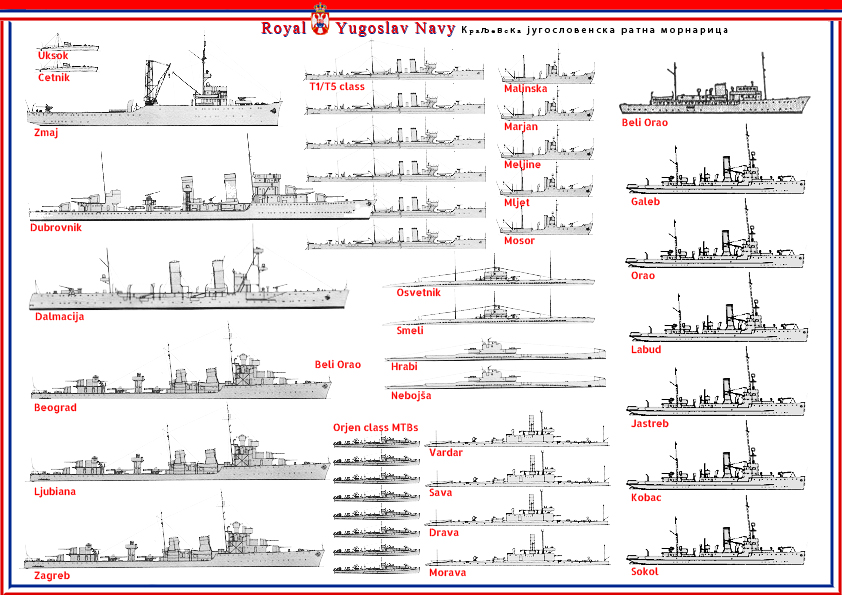
Fleet strength:
- Cruiser Dalmacija (1902)
- Destroyer Dubrovnik (1931)
- 3 Destroyers class Beograd (1937)
- 2 submarines class Osvetnik (1928)
- 2 submarines class Hrabi (1927)
- 6 T1/T5 class TBs (1914)
- 6 Galeb class minesweepers (1915)
- 1 gunboat Beli Orao (1939)
- 5 mining tenders class Malinska (1931)
- 2 MTBs class Cetnik (1927)
- 8 MTBs class Orjen (1936)
A swift end
When “Marita” operation came to an end, Yugoslavia saw the entire territory annexed to the Reich, with various allocations being drawn. From April 6 to 16, the weak Yugoslav army, already cut off from mutinous Croats, was destroyed, and what remained of her tried to take refuge in the mountainous areas of Serbia. But Von Weichs’ pincer maneuver encircled it and the army capitulated on the 18th. The fleet, in fact, feared a massive air attack and survivors took refuge in allied ports, including Malta.
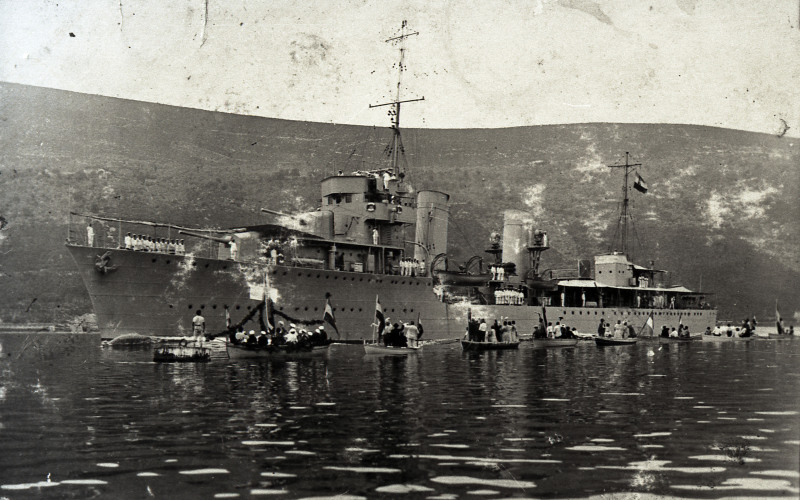
Destroyer Dubrovnik on shipspotting.uk during a naval review in Kotor (Cattaro)
The wartime Croatian Navy
Croatia, for its part, welcomed the Germans almost as liberators and soon became auxiliaries of the axis in Yugoslavia, the terrible Chetniks rivaling with the SS in terms of terror and fierce repression. Not all croats were collaborationalist though. As the war progressed, many Croats joined the partisans (see later). A puppet government was soon set up, dominated by Croats, on the enlarged territory of a hypothetical “Greater Croatia”. Everywhere else Yugoslavia was militarily occupied. Serbian, Bosnian and Slovenian partisans resisted it fiercely, at some point pinning down entire divisions in mountainous areas.
The Croatian “Navy” was re-equipped with some minesweepers based in Varna in the Black Sea: The Italians refused to see a Croatian flotilla on the Adriatic. After the Italian armistice, the latter were re-equipped with other units of the former Royal Navy, but a change of attitude and a mutiny on the torpedo T7 led to the flight of crews to the partisans. In 1944, Tito had managed to federate many pro-communist Croats against the German occupation.
The Yugoslavian Liberation Navy
When it came to Tito’s naval forces, they were particularly modest, with two old armed fishing vessels at the start, followed by 70 others. It also counted about fifty patrol boats of various origins, of 20 tons at best, the lists including also 200 transport ships and a dozen other light ships. Tito’s Partisans were mainly assisted by Churchill in naval means. In mid-1944, 8 PC-type patrollers and the corvette Nada, former Mallow of the “Flower” type.

Assisted by the USSR, the Yugoslav partisans then succeeded in liberating the territory from occupation. What remained of the fleet (ships passed from hand to hand, sometimes ex-Austro-Hungarian then successively Yugoslavs, Italians, Croats, Yugoslavs again as partisans, Germans.). The new Republican Yugoslav navy will slowly recover after the war. Of course this is only an introduction on the subject. For more about it see the read more/src section below.
Yugoslav Cruiser Dalmacija (1899)
Born SMS Niobe, laid down in 1898, launched on 18 July 1899 and commissioned 25 June 1900, the German Imperial cruiser of the Gazelle class was a 2,963 tonnes (2,916 long tons) light cruiser 105 m (344 ft 6 in) long overall by 12.20 m (40 ft) and 5.03 m (16 ft 6 in) draught with 8,000 ihp (6,000 kW) installed power, driving two shafts fed by Triple-expansion steam engines for a top speed of 21.5 knots (39.8 km/h; 24.7 mph). The ship also had a range of about 3,570 nmi (6,610 km; 4,110 mi) at 10 kn (19 km/h; 12 mph) and carried a crew of about 260. At the origin, she was armed with ten 10.5 cm SK L/40 guns (until 1919) and two 45 cm (17.7 in) torpedo tubes (until 1916), protected by 20 to 25 mm (0.79 to 0.98 in).
Dalmacija in Kotor, 1941, as captured by Italian troops. She was to operate with the Italians, Croatians and Germans under her old name Niobe.
Niobe was one of the rare cruisers authorized by the Treaty of Versailles rank, seen as “inoffensive” due to her age and size. So she served in the Reichsmarine and was significantly modernized: The ram bow was replaced by a clipper bow, new SK L/45 guns were installed on the same U-boat mountings plus tow 50 cm (20 in) torpedo tubes, in deck-mounted launchers. However by 24 June 1925, she was stricken from the lists. Available for purchase she was eventually sold to the Kingdom of Serbs, Croats and Slovenes.
As Austro-Hungarian ships in Yugoslav service were gone after Italian pressure and a treaty, the young Kingdom only had twelve modern torpedo boats to defend the coast. The purchase of Niobe, modernised by Germany, as therefore a golden opportunity. She was renamed Dalmacija (Dalmatia), rearmed in 1926 entering service. For Conway’s All the World’s Fighting Ships, these were six Škoda 8.5 cm/55 QF guns, and six 2 cm (0.79 in) AA guns. Another naval historian claims these were six 8.3 cm (3.3 in) L/35 AA guns, four 47 mm guns, six MGs. Nevertheless, Dalmacija was not really employed for first line action but rather served as a gunnery training ship. In the summer of 1929, she joined newly acquired submarine, and six TBs in a state visit to Malta, Corfu and Bizerte and crews made a very good impression.
In April 1941 Dalmacija did not see action, static in Kotor as an harbor defense vessel. She basically provided locally her heavy anti-aircraft armament. After the Yugoslav surrender, she was captured by Italy on 25 April. She was renamed Cattaro and went into service with the Regia Marina. However on 31 July 1942 she narrowly escaped British submarine HMS Traveller, south of Premantura, firing all torpedoes but missing. Her later fate is foggy. She was either transferred to the Navy of the Independent State of Croatia and renamed Znaim or returned to German service in September 1943 and then was transferred. in all cases a mixed German-Croatian crew operated the ship now reamed again Niobe for the Kriegsmarine.
For Conway’s, she was at first Italian, then Croatian and then German again. By 1943-44 her armament had been yet again revised (for the third time) with six 8.4 cm (3.3 in) AA guns adopted alongside four 4.7 cm (1.9 in) and four 20 mm AA guns, plus twenty-six 20 mm Breda AA guns. She was to be recommissioned KMS Niobe on 8 November 1943 but was attacked the night of 21–22 September by the British MTB 226 and MTB 228 SW of Zara. She survived and went into service as AA escort in the Adriatic. The convoy she escorted carried the 71st Infantry Division to garrison the islands of Cres, Krk, and Lussino. However by 19 December she ran aground at Silba Island. The MTB 276 and MTB 298 attacked the stranded ship and torpedoed her. The crews escaped and the wreck was later cannibalized by the Yugoslav Partisans and she remained there until 1947. She was raised and broken up for scrap two years later.
Destroyer Dubrovnik (1931)
Probably one of the most powerful and largest destroyer of her time, Dubrovnik has been planned as one of three destroyers leaders before the 1929 crisis. After it when consequences were felt, she remained the only one. But this made quite an interesting ship anyway.
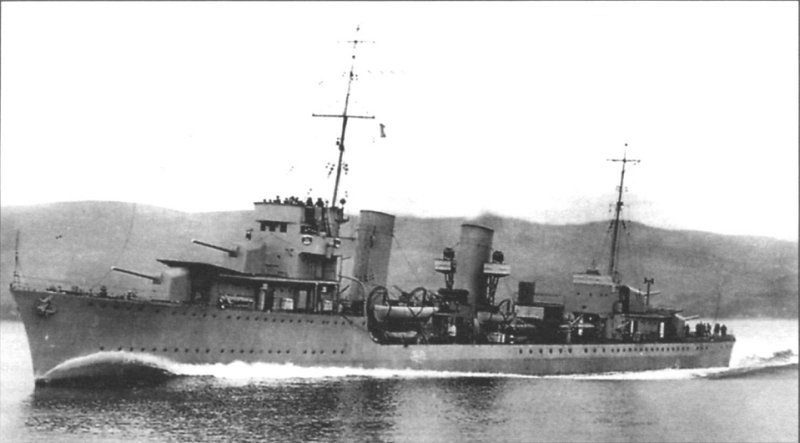 Destroyer & Flotilla Leader Dubrovnik at full speed. When delivered she was a superb destroyer, one of the most capable in the whole Mediterranean.
Destroyer & Flotilla Leader Dubrovnik at full speed. When delivered she was a superb destroyer, one of the most capable in the whole Mediterranean.
Design
Ordered to Yarrow Shipbuilders in Glasgow she resembled contemporary designs, but with guns 40% larger and therefore with the hull and powerplant to match. Her main armament indeed comprised four individual masked Skoda Škoda 140 mm (5.5 in) guns. This was completed but an equally impressive secondary battery of two Škoda 83.5 mm (3.29 in) and six Škoda 40 mm (1.6 in) AA guns, plus two Škoda 15 mm (0.59 in) machine guns and two banks of six 533 mm (21 in) torpedo tubes. She was also fitted with rails and equipment to carry and laid 40 naval mines.
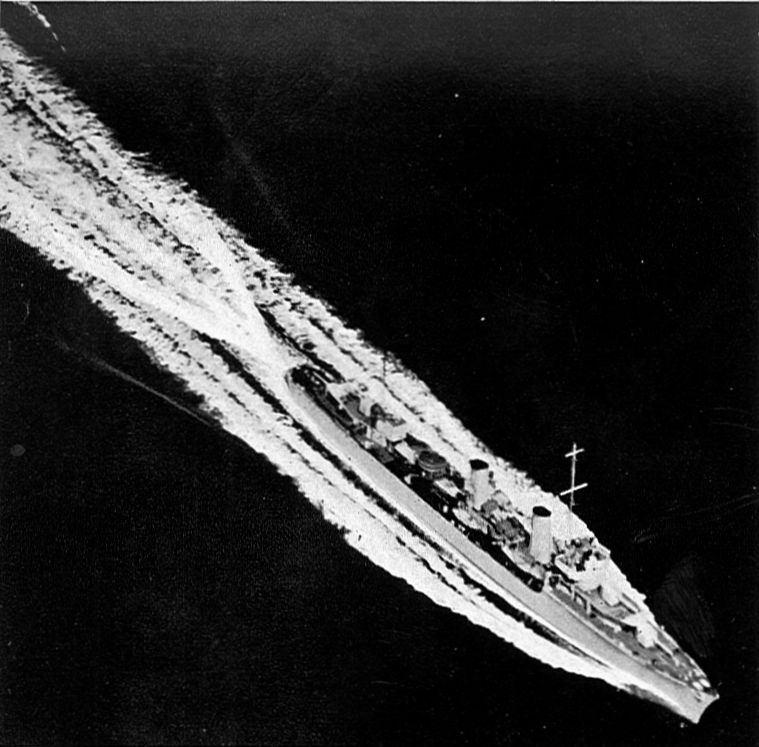
Dubrovnik at full speed in 1936
other characteristics
She displaced in Standard 1,880 long tons (1,910 t) and 2,400 long tons (2,439 t) fully loaded, and measured 113.2 m (371 ft 5 in)by 10.67 m (35 ft 0 in) by 3.58–4.1 m (11 ft 9 in–13 ft 5 in). She was powered by two shafts Parsons steam turbines (48,000 shp (36,000 kW))but had also one Curtis steam turbine for cruising (900 shp (670 kW)), all fed by three Yarrow water-tube boilers. Top speed as designed was 37 knots (69 km/h; 43 mph) and she cruised at 15 knots (28 km/h; 17 mph) for an overall range of 7,000 nmi (13,000 km; 8,100 mi) at 15 knots (28 km/h; 17 mph), quite sufficient for the Adriatic. Overall she resembled contemporary Tribal class and others with a characteristic box-like bridge, long forecastle and sharp raked stem.
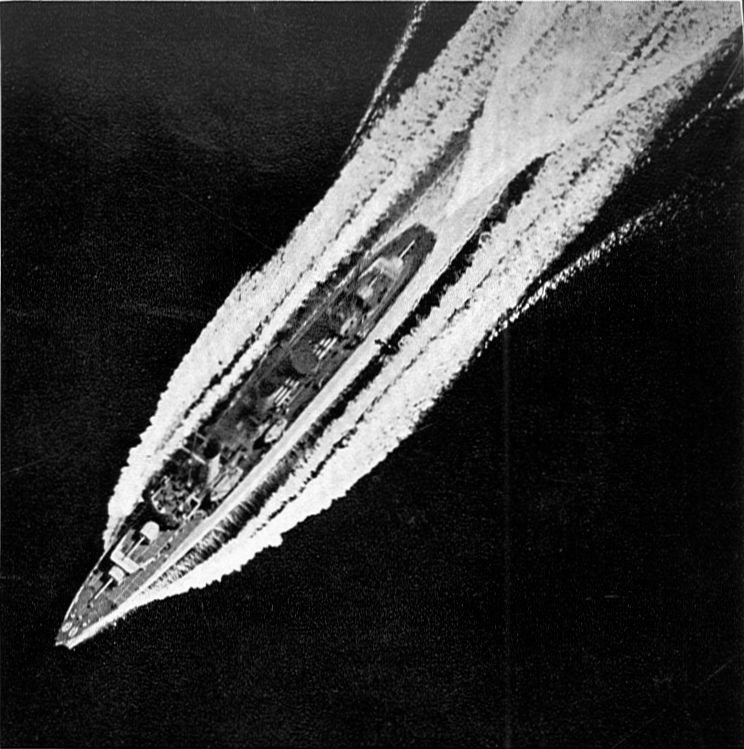
Another aerial view – Dubrovnik at full speed in 1936
Early Career
Dubrovnik was completed in May 1932. She left UK to reach the Mediterranean and from there, arrived at the Bay of Kotor. In harbour she received her complement of heavy A guns. She made in 1933 a state visit via the Turkish Straits to Constanța on the Black Sea coast of Bulgaria with the Yugoslav Royal family, and later visited Marseille, however she returned with the body of the king on board, killed by a Bulgarian assassin. She will later visit Corfu, Bizerte, Istanbul, Mudros and Piraeus. In April 1941 she was held at Kotor, under Šaškijević’s command of the 1st Torpedo Division, as leader of the three Beograd-class destroyers.
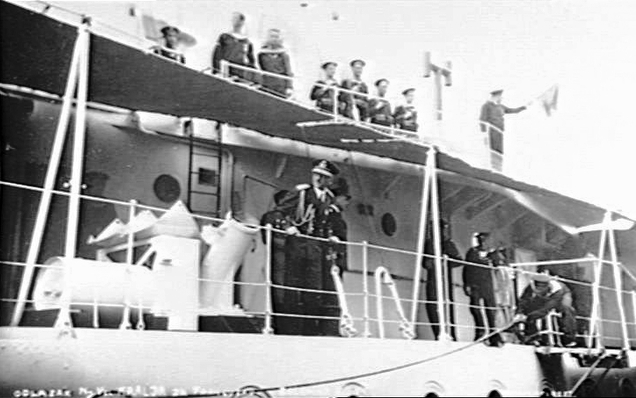
King Alexander I visiting the fleet at Split. Notice the side mortar ASW launcher.
As Premuda in Italian service (1942-43)
She was captured by Italian forces on 17 April 1941, and soon repaired (a scuttling attempt has been made) and integrated in the Regia Marina as Premuda and modernised. Her aft deckhouse and emergency bridge were replaced by an AA platform, mainmast and funnels shortened, main guns replaced by 135 mm L/45 guns and a supplementary 120 mm illumination howitzer while her four 40 mm guns were replaced by Breda Model 35 20 mm (0.79 in) L/65 machine guns, also in single mounts. She was operational in February 1942 and attacked an allied convoy to Malta (Operation Harpoon), in support of the 7th Cruiser Squadron. She later supplied the beleaguered Italo-German forces in Tunis in several missions 6–7 January 1943, and later joined Genoa for a major refit, with her machines worn out. The admiratly thought to convert her as a Navigatori-class ship but work was never completed when italy surrendered.
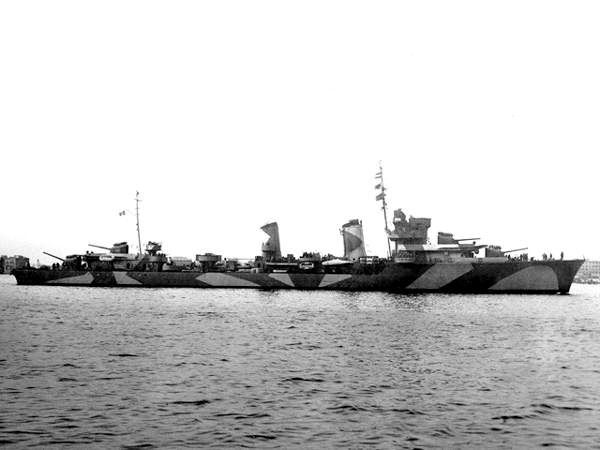

As Ta-32 in German service (1944-45)
Seized in September 1943, renamed later Ta-32 (32nd Torpedoboot Ausland), the Kriegsmarine at first thought to convert her as a radar picket for night fighters. She would have received three 105 mm (4.1 in) L/45 anti-aircraft guns, a Freya early-warning radar, a Würzburg gun-laying radar and a FuMO 21 surface fire-control system. However short on destroyers, she was sent as a regular DD with a DeTe radar and the German 105 mm guns. She lost a TT banks and received eight 37 mm (1.5 in) FLAK-38 guns and about 32-36 20 mm (0.79 in) FLAK batteries in twin mounts and Flakvierling (quad).

TA-32, in Kriegsmarine service 1945
She was in service only from 18 August 1944 and preyed on the Italian coast and Ligurian Sea with the 10th Torpedo Boat Flotilla. Togeher with two other captured destroyers she duelled with USS Gleaves. She laid mines in several occasions together with TA24 and TA29, like around Corsica when she was caught with the flotilla by British destroyers HMS Lookout and HMS Meteor (Battle of the Ligurian Sea on 18 March 1945). She escaped with her rudder damaged but was left in Genoa, never repaired and scuttled by the Germans on 24 April 1945.
Destroyers class Beograd (1936)
The Kraljevska Jugoslavenska Ratna Mornarica, or KJRM started to develop a flotilla leader eventually ordering to UK a modernized Royal Navy V and W-class flotilla leader, known as the Dubrovnik. Specifications included high speeds and long endurance to be deployed to the central Mediterranean, with the allied fleets. However the after the 1929 crisis, no other order of the originally planned four ships was passed.
Destroyer Beograd (right) moored with Dubrovnik. Both ships were camouflaged according to the surrounding patterns of Kotor cliffs, in black or dark green over light grey. They were photographed by the Italian troops that catpured the port on 17 April 1941.
Genesis of the Beograd class
Down to a smaller budget, Yugoslavia contacted the French Navy for smaller destroyers fit for a unique half-flotilla of three ships, to be led by the unique Dubrovnik. Therefore in 1934, the KJRM ordered the Beograd class in France, to be based on an existing French design of a standard 1500 ton destroyer. The lead ship, Beograd, was built by Ateliers et Chantiers de la Loire at Nantes. The contract however also stipulated the remainder two were to be built locally (Zagreb and Ljubljana) at Jadranska brodogradilišta Yard in Split but under French supervision. Two more ships has been planned, but contruction was not voted.
A model of the destroyer Zagreb, kept by the Jadranska brodogradilišta yard, now at the Split museum.
Design
General design
These ships were relatively similar to the French “1500 tonnes”, being heavier at 1,210 tonnes (1,190 long tons) standard and 1,655 tonnes (1,629 long tons) fully loaded while being relatively shorter at 98 m (321 ft 6 in), for a 9.45 m (31 ft 0 in) beam and 3.18 m (10 ft 5 in) draught.
Powerplant
The Beograd class was powered by Curtis steam turbines (the Yugoslavian-built ships had Parsons steam turbines) two shafts and three Yarrow water-tube boilers. This powrplant was rated for 40,000–44,000 shp (30,000–33,000 kW) giving a top speed of 38–39 knots (70–72 km/h; 44–45 mph), reduced to 35 knots (65 km/h; 40 mph) in service. 120 tonnes of fuel oil were carried to achieve a 1,000 nautical miles (1,900 km; 1,200 mi) range.
Armament
The armament was singular also with four Škoda 120 mm (4.7 in) L/46 in superfiring single masked mounts, four Bofors 40 mm AA in two twin mounts on either side of the aft shelter deck. Two triple 550 mm (22 in) torpedo tubes banks were also installed on the centerline. French design, British powerplant, Czech armament, ans Dutch fire-control systems provided by Hazemayer completed the picture. Rails were also fitted on the deck to carry 30 mines.
Career of the Beograd class
In May 1939, Beograd carried Yugoslavia’s gold reserve to the United Kingdom. Since production dragged on, only two ships were operational when the war broke out, the third locally built ship was commissioned several month after the war started. Soon, on 24 January 1940, Ljubljana hit a reef off Šibenik and sank, fortunately with only one victim in the tragedy. By 6 April 1941, Beograd and Zagreb were located in Kotor in company of their leader, Dubrovnik, making the 1st Torpedo Division, which stayed inactive, providing their AA fire against axis air attacks.

On 9 April, Beograd was planned to launch a raid on the Italian enclave of Zara, but it was cancelled after an Italian plane attacked the fleet and damaged the Beograd, her engine badly shaken by near-misses. She went back to port for repairs. Meanwhile the Ljubljana has been refloated and towed to Šibenik where she was repaired at that time. However on 17 April, Italian forces captured the port and three destroyers, Beograd and Ljubljana plus the Dubrovnik whereas Zagreb was scuttled, two officers remaining on board being killed by the explosion they activated. They were posthumously decorated by Tito by the Order of the People’s Hero.

IRN Lubiana 1944
In Italian service, repaired and equipped in standard, the two survivors became the Sebenico and Lubiana. The first entered service in August 1941 and the second, in November 1942. They took an active part in many convoy escort missions in the Aegean and to North Africa, 100 for Sebenico. On 1 April 1943, Lubiana was either sunk by British aircraft or by hitting a reef on the Tunisian coast. Sebenico was captured by the Germans in Venice after the Italian capitulation of September 1943, was repaired, refurbished to Kriegsmarine standard in 1944 and became TA43. She served in the northern Adriatic, performing escorts, laying mines and was either sank or scuttled in April or May 1945 at Trieste.
Submarines class Hrabi (1927)
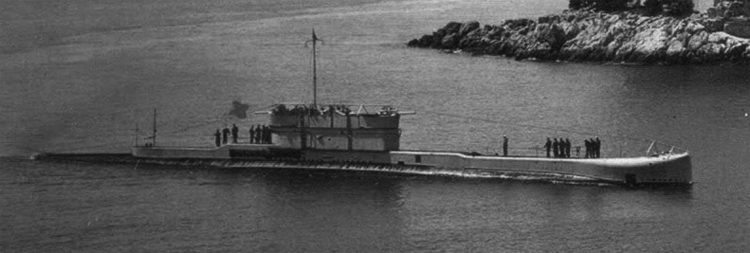
Yugoslav submarine Nebosja
Two models of British design, ordered at the same time but apparently launched earlier according to Conway’s, in 1927 at Vickers-Armstrong yard on the Tyne. Hrabi and Nebosja (“Brave” and “fearless”) has been in fact assembled WW1-era British L-class submarine from parts of boats cancelled in 1918 of the Group III boats HMS L-67 and HMS L-68, never completed. The yard could therefore get rid of the stored lot and the Kingdom of Serbs, Croats and Slovenes, acquired two submarines at a very affordable price to bolster their coastal fleet.
Design
The two submarines were essentially L-class repeats, 72.05 m (236 ft 5 in), by 7.32 m (24 ft 0 in), with a draught of 3.96 m (13 ft 0 in). They displaced 75 long tons (991 t) up to 1,164 long tons (1,183 t) underwater with 60 m (200 feets) diving depth.

Yugoslav submarine Hrabi
Propulsion was assured by two shaft Vickers diesel 2,400 bhp (1,800 kW) and two electric motors rated for 1,600 shp (1,200 kW). They could reach 15.7 knots (29.1 km/h; 18.1 mph) surfaced and still 10 knots (19 km/h; 12 mph) underwater. Both boats were armed with six bow-mounted 533 mm (21 in) torpedo tubes, with twelve torpedoes in reserve. On surface they counted two 102 mm (4 in) guns forward and aft of the conning tower in “bath-tubs” plus one AA machine gun. Radius of action was 3,800 nautical miles (7,000 km; 4,400 mi) at 10 knots.
CAREER
Both submarines left the Tyne in late January 1928 and travelled to Kotor with the submarine tender Hvar, arriving in April 1928. Hrabri, Nebojša, Hvar, six torpedo boats and Dalmacija made a state cruiser to Malta, Corfu and Bizerte in 1929. Anothr cruise in 1930 took place at Alexandria and Beirut. In 1932, the boats made limited exercizes and gunnery training, due to budgets constraints, and patrolling along the 600 km (370 mi) of the new country coastline.
Hrabri was captured in Kotor by the Italians but commissioned and scrapped in 1941.
Nebojša had an accident in 1930, and rather to be captured like her sister-ship in April 1941, she managed to evade the Italians and escape to Malta. Here, she was used by the Royal Navy as an anti-submarine warfare training vessel and after the war she went back to Yugoslavia, was overhauled locally and renamed Tara, used as training submarine until 1954.
Submarines class Osvetnik (1929)
Of French design, these submarines originally were planned to be inserted in a combined coastal defence consisting of a division of destroyers, four submarines, torpedo-boats, and torpedo/bombers. The first design ordered was originally built for the Kingdom of Serbs, Croats and Slovenes, Yugoslav Navy from 1928, based on a Simonot double-hull design, laid down Ateliers et Chantiers de la Loire, Nantes, in 1928.
Design
This pair of submarines were derived from the French Circé design. Of the 600-tonner class, Osvetnik and Smeli (“Avenger” , “Daring”) were 66.5 m (218 ft 2 in), by 5.4 m (17 ft 9 in), by 3.8 m (12 ft 6 in) in draught displacing 630 long tons (640 t), up to 809 long tons (822 t) submerged. They could dive up to 80 m (260 ft), were propelled however by German machinery: Two MAN diesels and two Nancy electric motors when submerged. On surface, the diesels were rated at 1,480 bhp (1,100 kW) and the electric units developed 1,000 shp (750 kW).
Top speed on surface was 14.5 knots (26.9 km/h) 9.2 knots (17.0 km/h) underwater. Raduis was 3,500 nautical miles (6,500 km) at 9 knots (17 km/h) on surface, down to75 nautical miles (139 km) when submerged at 5 knots. As for the armament, six 550 mm (22 in) torpedo tubes fixed (four bow, two stern), and one deck 100 mm (3.9 in) gun, plus a Skoda 40 mm (1.6 in) AA guns were mounted.
CAREER
They were launched on December 1928 and January 1929, arrived in the Bay of Kotor on 9 December 1929. They were engaged in only few exercises due to budget constraints. Osvetnik visited many Mediterranean ports during the interwar and after the war broke out she was captured at Kotor in April 1941 by the Italians. They modernized her, ported to the Regia Marina standard and renamed Francesco Rismondo, but used for training and experimentation. After September 1943, she was captured by the Germans only to be scuttled later.

Smeli, date unknown
Smeli also participated in several cruises in the Mediterranean and a few interwar exercises. She was also captured by the Italians in April 1941, refitted and modernized and commissioned as Antonio Bajamonti, but also not actively used in combat missions. She was scuttled by the Italians in September 1943.
Class T Torpedo-Boats (1915)

Six ww1-era Austro-Hungarian torpedo boats were the few ships allocated by default in 1918 to the new Kingdom, confirmed in 1920 and not contested by the treaty of St Germain in 1921. At the origin, there were twelve, from three groups, T1, T5 and T9, former 74T class. The T9 were from the Kaiman group.
Whereas the latter were all discarded in the late 1920s, the others stayed in service for all the interwar, to the exception of T4 which ran aground and was so badly damaged to be repaired, that she was discarded. T2 was also discarded in 1939 but T1 and T3 were active during WW2. At least until Aril 1941 when both were captured by the Italians. T1 returned to Yugoslavia (probably under Croatian control), after the Italian capitulation.
After modernized postwar, she was renamed Golesnica and served until the early 1960s, not bad for a 1914 ship. T3 was captured by the Germans at Rijeka in September 1943 and pressed into service with the Kriegsmarine as T48 but sink in 20.201945 by British aviation at Trieste.

The T5 group saw heavy action in WW2 as well. After captured in April 1941, they were pressed into the Regia Marine and used for patrols in the Adriatic under their old names. Eventually T6 was scuttled off Rimini 11.9.1943 to prevent her capture, T8 was sunk by a German aircraft also in September 1943, T5 was returned to the Royal Yugoslav Navy in December the same year and apparently was not reused by the Germans. She served after the war as Cer until the 1960s. T7 was captured and presented to the Croatian Navy but her service last years are not well known. She was sunk by three British MTBs on 25.6.1944.
Gunboat Beli Orao (1939)
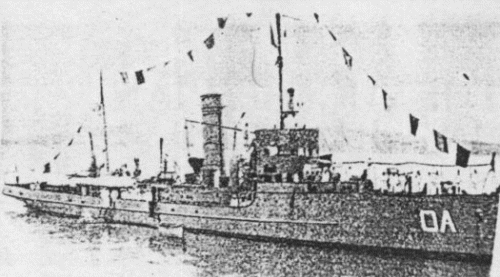
This ship was ordered from Adriatico yard at Trieste in 1938. She was designed to act as a Royal yacht in peacetime and to be converted quickly as gunboat in wartime, and escort vessel. Beli Ora displaced 567 tons, for 65 x 8 x 2.84 m, and was propelled by two shaft mated to Sulzer diesels rated for 1900 hp total, enough for 18 knots. Armament comprised two 40 mm Skoda AA guns and two machine guns. She was captured at Kotor by the Italians in April 1941 and renamed Alba in Regia Marina service. She was returned by the Germans to the Yugoslavian navy in 7 December 1943 and renamed Zagabria, and aftert the war Biokovo and later Jadranka, her last name as a state Yacht when she was finally discarded in 1978.
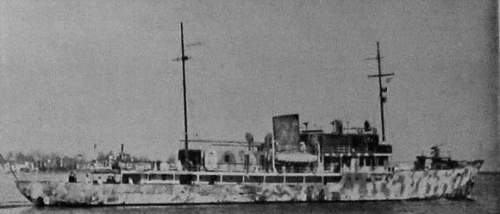
Malinska class Mining tenders (1931)
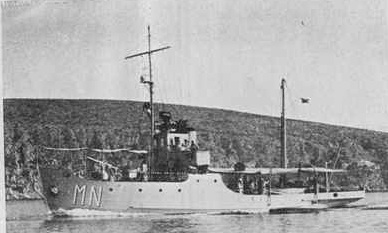
Also known in Italian service as Albona-class, these minelayer and mine tenders has been built by the Austro-Hungarian navy at the Kraljevika yard as MT130 class. Started but never completed before the war ended, work resumed for the new regime in 1920. In total five units were used by the Yugoslavian navy: Malinska, Marjan, Maljine, Mljet, and Mosor. Three more were completed for the Italian navy (Albona). In April 1941 all five were captured by the Italians and incorporated into the Regia Marina as Arbe, Ugliano, Solta, Meleda and Pasman. Ugliano and Pasman wganged hands and were lost in 1944, all three others survived the war.
These ships displaced 128 tonnes (126 long tons) standard, for 31.10 m (102 ft 0 in) overall for 6.70 m (22 ft 0 in) in beam and a 1.40–1.70 m (4 ft 7 in–5 ft 7 in) draught. They were propelled by a single Yarrow boilermated to triple expansion steam engines rated for 280 ihp (210 kW), providing a top speed of 9 knots (17 km/h; 10 mph) and armed with one 66 mm (2.6 in) L/30 gun.
Galeb class Minesweepers (1916)
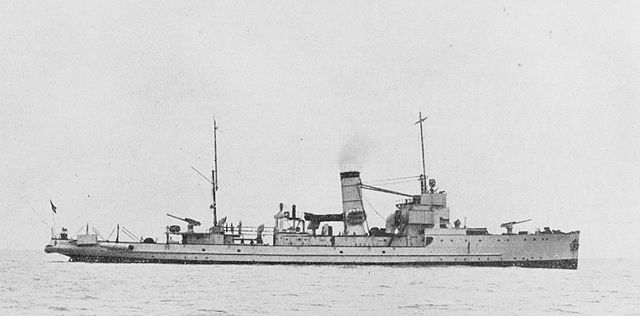
These six ships were ex-German M class minesweepers, purchased as “Tugs” in 1921 and renamed upon arrival Galeb, Jastreb, Zirona, Kobac, Gavran, Orao, and Sokol. These were 330 tons ships, captured by the Italians in April 1941 and renamed Selve, Jirona, Unie, Oriole, Vergada and Eso. Selve was lost off benghazi, as Zirona, Unie at Bizerte, Oriole at Port Aigustra, Eso at Djerba.
Zmaj minelayer (1930)
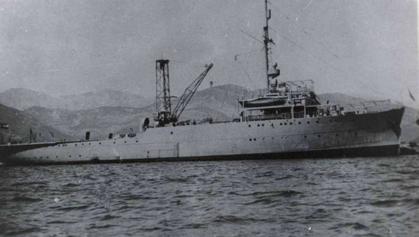
The Yugoslavian ship Zmaj was originally laid down in 1928 by Deutsche Werft in Hamburg, Germany, and unarmed due to the restrictions of the Versailles Treaty. Launched on 22 June 1929 she was sold to Yugoslavia. She had a severe engine fire on 9 September 1929 off Flushing, Netherlands however, returning to Hamburg for repairs before being accepted by the Royal Yugoslav Navy on 20 August 1930 and commissioned the next year for fitting-out in Kotor. In 1937 she was reclassified as a minelayer.
Zmaj displaced 1,870 metric tons (1,840 long tons) and was 83 m (272 ft 4 in) long by 13 m (42 ft 8 in) and 4 m (13 ft 1 in) in draft. She was propelled by 2 shafts, 2 MAN Diesel enginesrated 3,260 shp (2,430 kW), allowing a top speed of 15 knots (28 km/h; 17 mph), with a 4,000 nautical miles (7,400 km; 4,600 mi) range. Her complement was 145 and she was armed in Kotor with two single mount 83.5 mm (3.29 in)/55 Škoda AA guns and two twin 40 mm (1.6 in)/67 Škoda AA guns. She also carried a de Havilland DH.60 Moth seaplane and had a handling crane. She was captured by Germany on 17 April 1941, was renamed Schiff 50 on 6 November 1942 and re-classified as an aircraft rescue ship on 7 August 1941. She also served as a troop transport from 27 December 1941 and a minelayer from August 1942 after refit from April to August. She was sunk 22 September 1944.
Yugoslavian MTBs (1930)
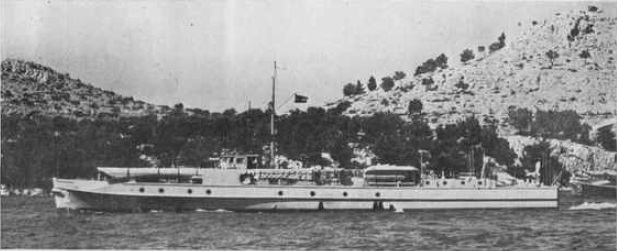
Cetnik class:
These two 1920 British CMB design of the 55 feet type were purchased in 1927 and used as TC1 and TC2, 15 ton boats capable of 37 knots, armed with two 356 mm torpedo tubes adnd two MGs. Both captured by the Italians, renamed MAS1D and 2D, the first sank in April 1942 and second strickedn in 1943, found after the war at Trieste.
Orjen class:
Built in Germany by Lürssen and based on S2 class in 1936, these boats were equipped with Mercedes-Benz engine for top speed and had a cruise of 7kts thanks to a 100hp Maybach engine propelling a central shaft. Numbered 1-8 and later renamed Orjen, Dumitor, Suvobor, Kalmakclalan, Velebit, Dinaira, Rudnik, Triglav.
On 16 april 1941 Durmitor and Kajmakcalan escaped to Crete, and later Alexandria commissioned by new Yugoslavian Navy as TC5 and TC6, discarded 1962-1963.
All the others were captured and reused by the Regia Marina as MAS3D to 8D, renamed MS41-46 in 1942; Two were scuttled in September 1943, the other served with the germans and were scuttled in 1944.
Riverine Monitors
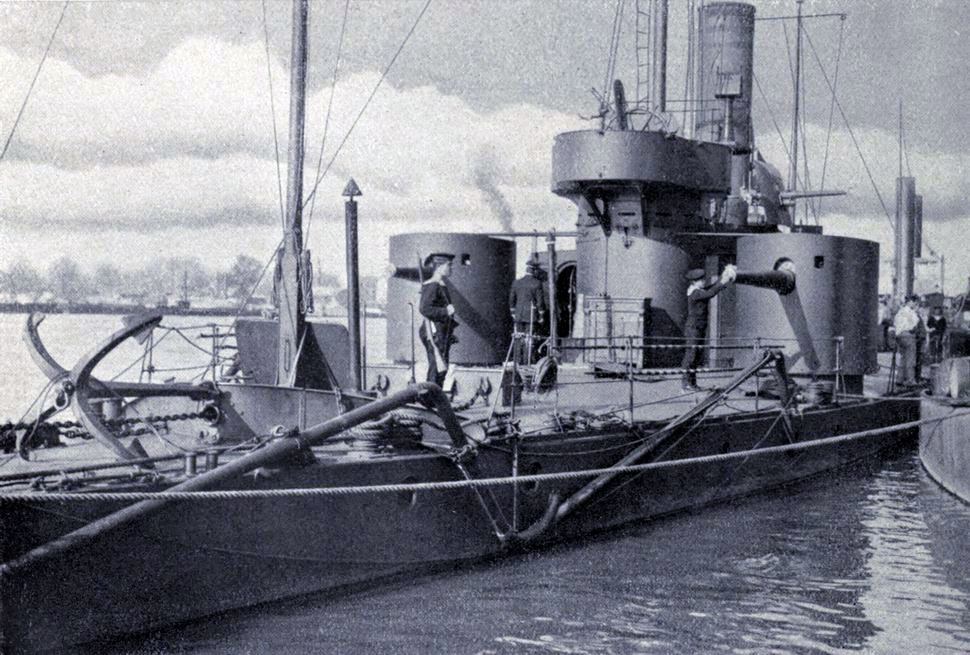
The Royal Yugoslav Navy’s predecessor, the KJRM inherited four river monitors from the Austro-Hungarian Navy’s different classes. In April 1941, with the Italian takeover one was sunk, and the others were scuttled although one of these was raised and scrapped later, and two were also raised to be reused by the Independent State of Croatia, lost in action/ The last one survived until 1962.
Miscellaneous:
-Submarine tender Sitnica: German-built, acquired 1921, 370 tons, fate unknwon
-Submarine tender Hvar: British-built, acquired 1927, 2,600 tons, scrapped 1953.
-Salvage ships Moćni (Ex-Austro-Hungarian) 265 tons, acquired 1921, scrapped 1929.
-Salvage ships Spasilac, 740 tons, acquired 1929, fate unknown.
-Tanker Lovćen, 561 tons, acquired 1932, discarded 1945.
-Tanker Perun (Ex-Belgian, acquired 1939) 4,500 tons, sunk March 1943.
Read More/Src
- Conway’s all the world’s fighting ships J. Gardiner
- Brescia, Maurizio (2012). Mussolini’s Navy. Barnsley, South Yorkshire
- Fraccaroli, Aldo (1974). Italian Warships of World War II. London, England: Ian Allan Publishing
- Greger, René (1976). Austro-Hungarian Warships of World War I
- Gröner, Erich (1990). German Warships: 1815–1945. Annapolis, Maryland
- Ships of the Royal Yugoslav Navy list
- Video: “Flammes sur l’Adriatique” 1969 French-Yugoslavian movie depicting the Yugoslav fleet at Kotor and the story behind the scuttling of the Zagreb (Part 1)

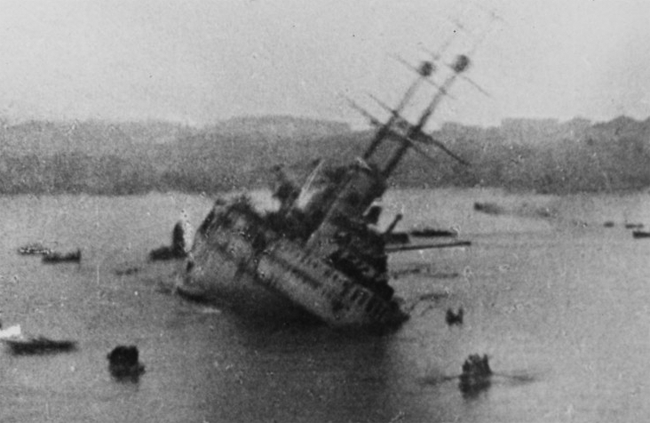
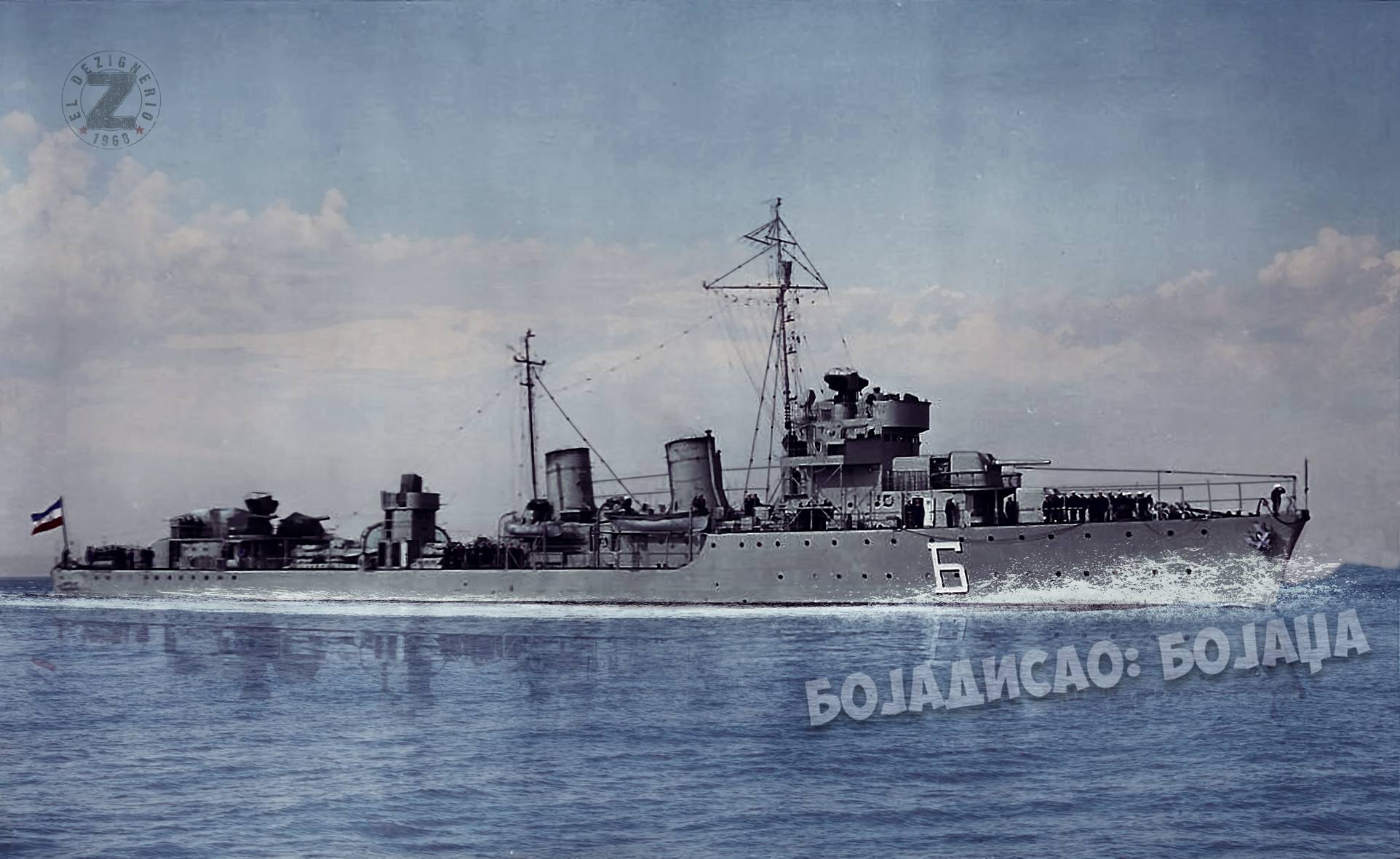
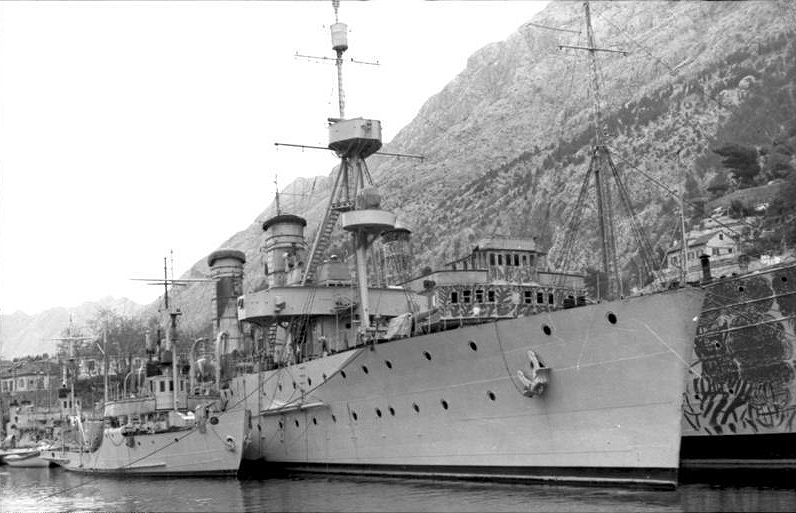
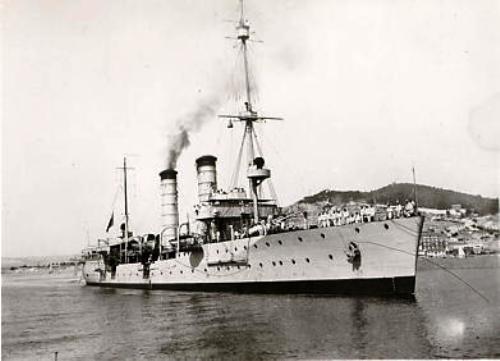
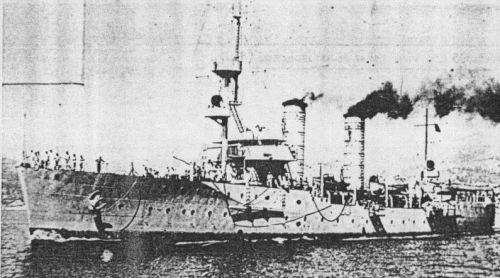
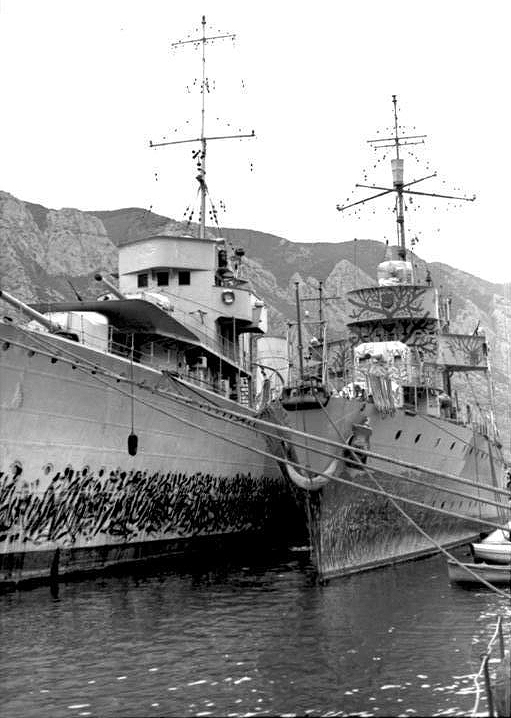
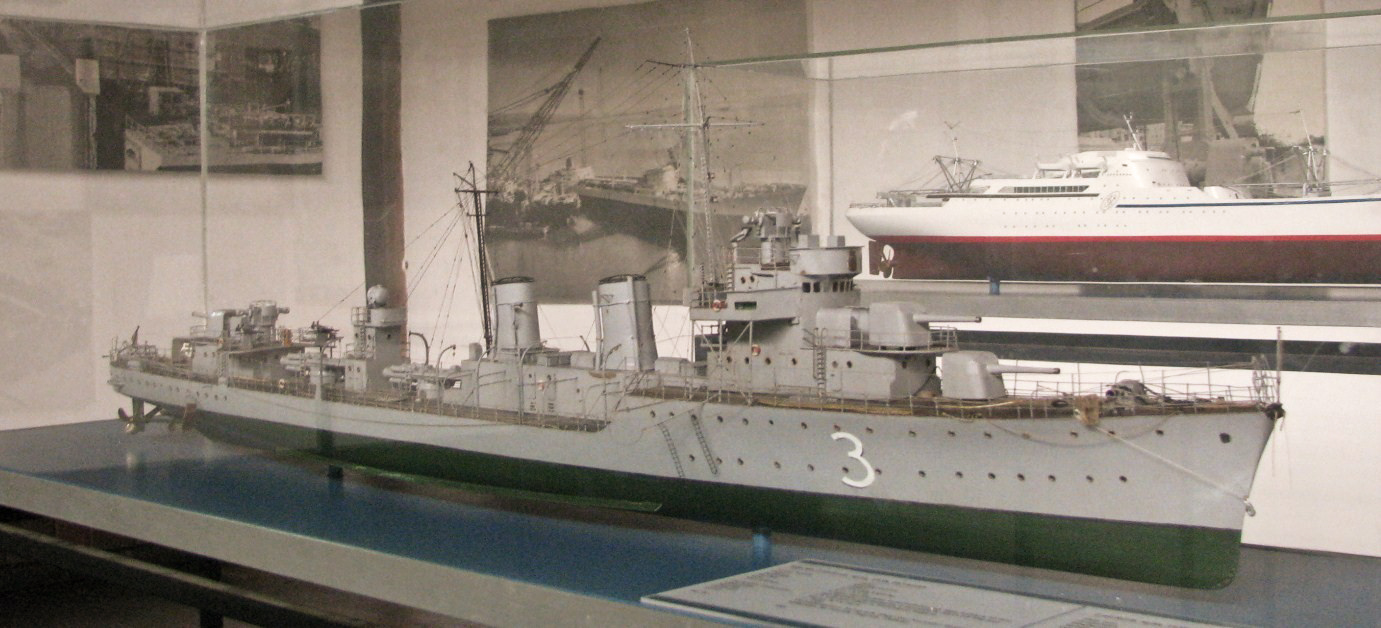

 Latest Facebook Entry -
Latest Facebook Entry -  X(Tweeter) Naval Encyclopedia's deck archive
X(Tweeter) Naval Encyclopedia's deck archive Instagram (@navalencyc)
Instagram (@navalencyc)





 French Navy
French Navy Royal Navy
Royal Navy Russian Navy
Russian Navy Armada Espanola
Armada Espanola Austrian Navy
Austrian Navy K.u.K. Kriegsmarine
K.u.K. Kriegsmarine Dansk Marine
Dansk Marine Nautiko Hellenon
Nautiko Hellenon Koninklije Marine 1870
Koninklije Marine 1870 Marinha do Brasil
Marinha do Brasil Osmanlı Donanması
Osmanlı Donanması Marina Do Peru
Marina Do Peru Marinha do Portugal
Marinha do Portugal Regia Marina 1870
Regia Marina 1870 Nihhon Kaigun 1870
Nihhon Kaigun 1870 Preußische Marine 1870
Preußische Marine 1870 Russkiy Flot 1870
Russkiy Flot 1870 Svenska marinen
Svenska marinen Søværnet
Søværnet Union Navy
Union Navy Confederate Navy
Confederate Navy Armada de Argentina
Armada de Argentina Imperial Chinese Navy
Imperial Chinese Navy Marinha do Portugal
Marinha do Portugal Mexico
Mexico Kaiserliche Marine
Kaiserliche Marine 1898 US Navy
1898 US Navy Sovietskiy Flot
Sovietskiy Flot Royal Canadian Navy
Royal Canadian Navy Royal Australian Navy
Royal Australian Navy RNZN Fleet
RNZN Fleet Chinese Navy 1937
Chinese Navy 1937 Kriegsmarine
Kriegsmarine Chilean Navy
Chilean Navy Danish Navy
Danish Navy Finnish Navy
Finnish Navy Hellenic Navy
Hellenic Navy Polish Navy
Polish Navy Romanian Navy
Romanian Navy Turkish Navy
Turkish Navy Royal Yugoslav Navy
Royal Yugoslav Navy Royal Thai Navy
Royal Thai Navy Minor Navies
Minor Navies Albania
Albania Austria
Austria Belgium
Belgium Columbia
Columbia Costa Rica
Costa Rica Cuba
Cuba Czechoslovakia
Czechoslovakia Dominican Republic
Dominican Republic Haiti
Haiti Hungary
Hungary Honduras
Honduras Estonia
Estonia Iceland
Iceland Eire
Eire Equador
Equador Iran
Iran Iraq
Iraq Latvia
Latvia Liberia
Liberia Lithuania
Lithuania Mandchukuo
Mandchukuo Morocco
Morocco Nicaragua
Nicaragua Persia
Persia San Salvador
San Salvador Sarawak
Sarawak Uruguay
Uruguay Venezuela
Venezuela Zanzibar
Zanzibar Warsaw Pact Navies
Warsaw Pact Navies Bulgaria
Bulgaria Hungary
Hungary

 Bundesmarine
Bundesmarine Dutch Navy
Dutch Navy Hellenic Navy
Hellenic Navy Marina Militare
Marina Militare Yugoslav Navy
Yugoslav Navy Chinese Navy
Chinese Navy Indian Navy
Indian Navy Indonesian Navy
Indonesian Navy JMSDF
JMSDF North Korean Navy
North Korean Navy Pakistani Navy
Pakistani Navy Philippines Navy
Philippines Navy ROKN
ROKN Rep. of Singapore Navy
Rep. of Singapore Navy Taiwanese Navy
Taiwanese Navy IDF Navy
IDF Navy Saudi Navy
Saudi Navy Royal New Zealand Navy
Royal New Zealand Navy Egyptian Navy
Egyptian Navy South African Navy
South African Navy






























 Ukrainian Navy
Ukrainian Navy dbodesign
dbodesign